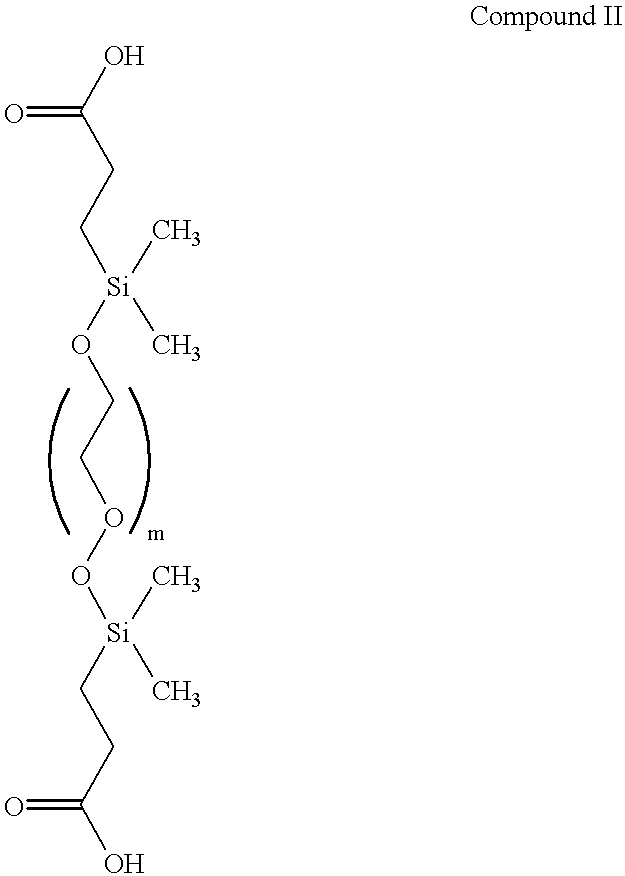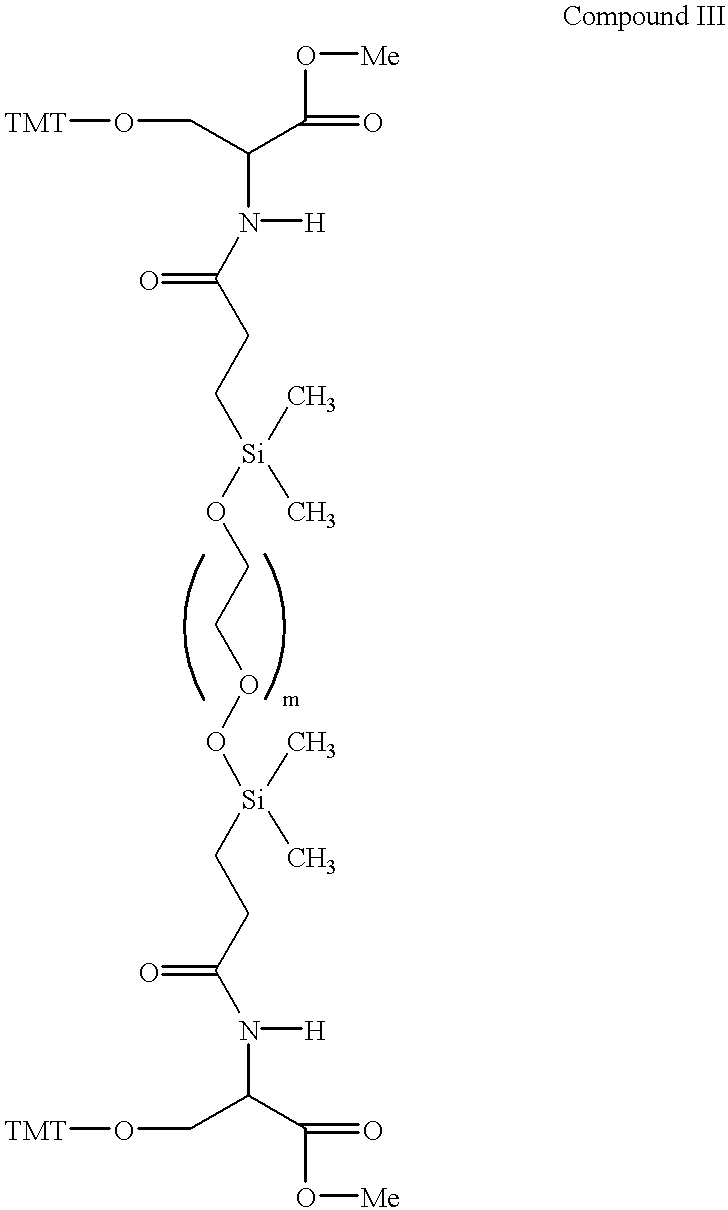Spatially addressable, cleavable reflective signal elements, assay device and method
a reflective signal element and assay technology, applied in the field of spatial addressable, cleavable reflective signal elements, can solve the problems of centralized laboratories and large hospitals, the limitation of such effort is the design, and the cost of analyzers is high
- Summary
- Abstract
- Description
- Claims
- Application Information
AI Technical Summary
Benefits of technology
Problems solved by technology
Method used
Image
Examples
example i
6. EXAMPLE I
Increasing the Specificity of a Nucleic Acid Hybridization Assay
In a direct nucleic acid hybridization assay, the side elements of the cleavable signal element are oligonucleotides designed to hybridize with distinct sites on a chosen, predetermined, nucleic acid to be detected in the sample. For many applications of this methodology, cross-reactivity with sample oligonucleotides having even a single mismatched nucleotide should be minimized. In particular, nucleic acid hybridization assays adapted to use the cleavable reflective signal element of the present invention for detection of point mutations, as, e.g., for detection of point mutations in the BRCA1 and BRCA2 genes that predispose to breast and ovarian cancers, must be able to discriminate as between nucleic acid samples containing a single mismatched nucleotide.
The longer the oligonucleotide side elements of the cleavable signal element--and thus the longer the sequence that is complementary as between the side ...
example ii
7. EXAMPLE II
Detection of HIV-1
HIV-1 proviral DNA from clinical samples is amplified as follows, essentially as described in U.S. Pat. No. 5,599,662, incorporated herein by reference.
Peripheral blood monocytes are isolated by standard Ficoll-Hypaque density gradient methods. Following isolation of the cells, the DNA is extracted as described in Butcher and Spadoro, Clin. Immunol. Newsletter 12:73-76 (1992), incorporated herein by reference.
Polymerase chain reaction is performed in a 100 .mu.l reaction volume, of which 50 .mu.l is contributed by the sample. The reaction contains the following reagents at the following initial concentrations:
10 mM Tris-HCl (pH 8.4)
50 mM KCl
200 .mu.M each DATP, dCTP, dGTP, and dUTP
25 pmoles of primer 1, of sequence shown below
25 pmoles of primer 2, of sequence shown below
3.0 mM MgCl.sub.2
10 % glycerol
2.0 units of Taq DNA polymerase (Perkin-Elmer)
2.0 units UNG (Perkin-Elmer)
Primer 1: 5'-TGA GAC ACC AGG AAT TAG ATA TCA GTA CAA TGT-3'(SEQ ID NO:10)
Primer ...
PUM
| Property | Measurement | Unit |
|---|---|---|
| diameter | aaaaa | aaaaa |
| diameter | aaaaa | aaaaa |
| constant linear velocity | aaaaa | aaaaa |
Abstract
Description
Claims
Application Information
 Login to View More
Login to View More - R&D
- Intellectual Property
- Life Sciences
- Materials
- Tech Scout
- Unparalleled Data Quality
- Higher Quality Content
- 60% Fewer Hallucinations
Browse by: Latest US Patents, China's latest patents, Technical Efficacy Thesaurus, Application Domain, Technology Topic, Popular Technical Reports.
© 2025 PatSnap. All rights reserved.Legal|Privacy policy|Modern Slavery Act Transparency Statement|Sitemap|About US| Contact US: help@patsnap.com



